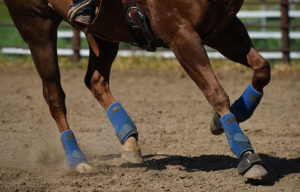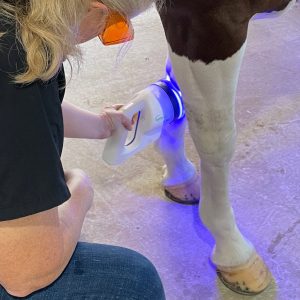Does Insulin Cause Equine Laminitis?

High insulin levels can cause laminitis. Dianne McFarlane, DVM, PhD, Dipl. ACVIM, professor and chair of the University of Florida’s Department of Large Animal Clinical Sciences, in Gainesville, said if a healthy horse has an insulin spike, changes in their feet can occur within 12 hours. In three days, the horse’s feet will become sore. Researchers have not yet pinpointed how this happens in the foot, but they have proven direct correlation between laminitis and blood insulin levels.
This podcast is an excerpt of our Ask The Horse Live podcast, “Understanding Equine Insulin Resistance.” Listen to the full recording here.
About the Expert:
Dianne McFarlane
 Dianne McFarlane, DVM, PhD, Dipl. ACVIM, is a professor and chair of the University of Florida’s Department of Large Animal Clinical Sciences, in Gainesville. She has studied equine aging and age-related diseases for more than 20 years. She is most recognized for her work in equine endocrine diseases, including pituitary pars intermedia dysfunction and equine metabolic syndrome. McFarlane received her DVM from the University of California, Davis, School of Veterinary Medicine. She then completed a large animal internship at the University of Georgia, followed by a residency in equine internal medicine at North Carolina State University. McFarlane completed her PhD at the Atlantic Veterinary College, on Prince Edward Island, Canada, where she investigated the cause of equine pituitary pars intermedia dysfunction.
Dianne McFarlane, DVM, PhD, Dipl. ACVIM, is a professor and chair of the University of Florida’s Department of Large Animal Clinical Sciences, in Gainesville. She has studied equine aging and age-related diseases for more than 20 years. She is most recognized for her work in equine endocrine diseases, including pituitary pars intermedia dysfunction and equine metabolic syndrome. McFarlane received her DVM from the University of California, Davis, School of Veterinary Medicine. She then completed a large animal internship at the University of Georgia, followed by a residency in equine internal medicine at North Carolina State University. McFarlane completed her PhD at the Atlantic Veterinary College, on Prince Edward Island, Canada, where she investigated the cause of equine pituitary pars intermedia dysfunction.

Written by:
Shoshana Rudski
Related Articles
Stay on top of the most recent Horse Health news with












